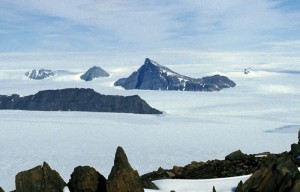Greenland Ice Thickness
When examining the thickness of the ice in  Greenland, one has to begin with the Greenland ice sheet. It is nearly 1.7 million sq km and covers 80% of the land’s surface. The average thickness is 2 km.
Greenland, one has to begin with the Greenland ice sheet. It is nearly 1.7 million sq km and covers 80% of the land’s surface. The average thickness is 2 km.
Other Facts about the Greenland ice Sheet
The Greenland ice sheet is second only to Antarctica in terms of size. The sheet stretches for nearly 2,400 kilometers by a north-south direction. The widest point is 1,100 km at 77 degrees N. The most recent observations put the mean attitude at 2,135 meters. The thickest point in the ice sheet is 3 km.
The age of the ice sheet is subject to debate, but some scientists believe that it can go as far back as 100,000 years. The sheer amount of the ice has pushed the land’s level down. The ice reaches its peak at the two north-south domes, going up 3,000 meters.
This is at 63 to 65 degrees N. While the thickness of the ice in Greenland varies, the temperature of the ice is predictable. The lowest mean temperature is -31 C (-24 F). At the top of the south dome it is -20 C (-4 F).
The Melting Ice and Global Warming
Scientific studies have shown that since 1979, the melting of the ice in Greenland has increased by 16%. It needs to be stressed that it was only in 1979 when measurements where first taken. The melting could have begun much earlier.
The melting that took place in 2002 surpassed all previous marks. The estimated rate is 239 cubic km a year (57 cubic miles). Of the ice being lost, over 70% are from the glaciers.
Glaciers
It should be noted that there are other ice formations on Greenland. These include several glaciers. The thickness of the ice in Greenland in these areas varies. Some of the glaciers range from 76,000 to 100,000 sq km.
Other Greenland Ice Facts and Figures
The ice in Greenland is due to snow, rime and other types of precipitation. The prevailing conditions allow these elements to be packed together and form ice. Over time, the ice thickens. Scientists have determined the ice thickness at the ridges is around 4548 m.
Back in 1996 the average thickness of the ice cap was 2.3 km. The thickness varies depending on the location; it some areas the thickness can go over 10,000 ft.
Other Facts about Greenland
Its official name is Kalaallit Nunaat. Not only is the thickness of the ice in Greenland second only to Antarctica, but it is the biggest island on Earth. Its capital is Nuuk. Although part of Denmark, it is self governing. The entire area of Greenland is about 840,000 sq miles (2,175,000 square km). It is 1,650 miles (2,650 km) long.
Except for scientists that study the ice sheet, the population lives along the coast. Not surprisingly, the land is susceptible to blizzards. It has been estimated that 1 billion tons of ice are carried off by the water annually. These end up as icebergs.
Although the thickness of the ice in Greenland is still imposing, it is decreasing at an alarming rate. Some scientists think if the ice were to melt, the seas would rise by over 20 ft.





